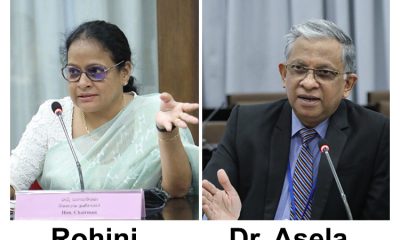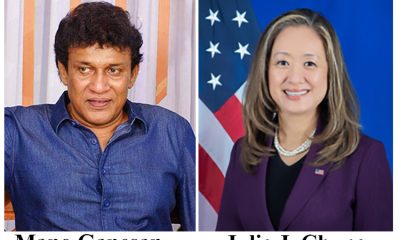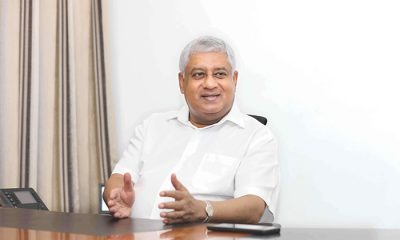Features
Visa Debacle: Fixing what ain’t broken
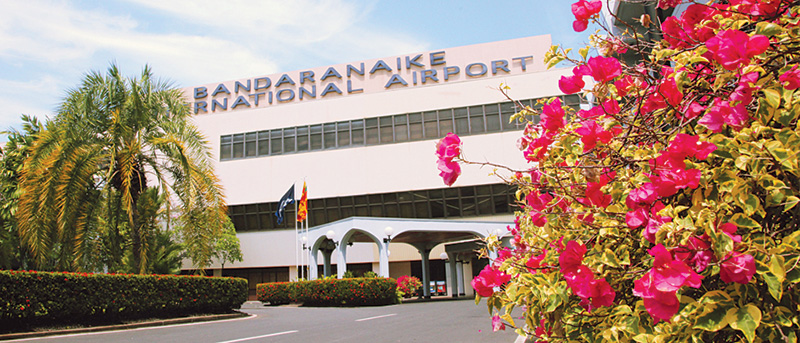
by Dr Sirimewan Dharmaratne,
former Senior Analyst, HMRC, UK
There is a famous saying ‘If it ain’t broke, don’t fix it. Sri Lanka seems to be the exception to this rule. This is no more laid bare than the current debacle with tourist visas. Most countries that want tourist dollars have visa free entry or a minimal fee. A visa is a means for controlling access and a fee act as a further deterrent. It is a form of a user fee that is designed to restrict entry. Therefore, if you want tourists to come to your country and spend money, simple economics says not to charge an entry fee.
Reciprocal Requirements
The justification seems to be centred around the fact that Lankans pay much higher fees to this company when they travel compared to what visitors pay to come to Sri Lanka. This justification alone typifies why Sri Lanka is where it is now. The underlying issues here is not what Sri Lankans have to pay when they travel abroad but what tourists have to pay when they come to Sri Lanka. This is what those who are actually making a living from the tourism is concerned about. Most developed countries have stringent visa requirements for citizens of less developed countries for obvious reasons. But those countries do not have reciprocal requirements. This is not because they don’t have pride, but because they need the money that tourism brings in. It makes good business sense.
They make more money by allowing well-off tourists to come freely and spend rather than by selling visas.
Elated by the recent surge in tourist arrivals, in the eyes of the government, Sri Lanka is now a ‘cannot do without’ destination. Therefore, the first response is to increase the price of everything, starting with a visa fee and let others have a piece of the pie as well. Having this overassessment about the value of the country has led to various forms of rip-offs, some of which have been widely circulated in social media. Further, one has only to check hotel rates and other accommodation to realise how the rates have gone up astronomically. Increase of visa fee appears to be following the same misguided thinking. The truth, however, is that Sri Lanka is considered a ‘cheap’ destination for an ‘exotic’ holiday. It does not particularly standout in any aspect, such as beaches, nature, wildlife or food compared to other similar destinations. As Sri Lankans, we all have a visceral value of the country, but in the eyes of tourists, it is one of the many destinations that they can spend their money on and not a place to be visited at any cost.
Demand for Travel
Access costs determined the demand for a destination. When there are competing destinations in terms of characteristics, a savvy, erudite traveller will naturally select a destination that has lower access cost. While there is some flexibility in certain access costs, such as airfares, visa costs are regarded as a waste that does not add anything to the value of a trip. Most Western tourists look at it in disdain because they believe, rightly or wrongly, developing nations should be facilitating their patronage and not restrict it. Therefore, the issue is not what Sri Lankans have to pay when they travel overseas, but what tourists have to pay when they come to Sri Lanka compared to other South Asian destinations.
Sri Lanka had a somewhat high US$50 visa, which most visitors acquiesced. According to SLTDA’s own departure survey, most visitors stay 21 days or less with most frequent length-of-stay being 14 or 21 days. Therefore, it is likely that in excess of 95% of the visitors would have obtained this visa. This option that was mysteriously excluded, appears to have been reinstated. However, what in fact is the correct fee is sketchy.
If the proposed service fees are added, then the actual cost to the visitor could be as high as $75, which is a 50% increase. This is where knowledge of some basic economics would have been helpful. If you raise the price of goods or service without a discernible increase in quality, the demand will go down.
May it be for eggs, bread, fuel or visas, this is one of the basic economic principles that actually work. On the other hand, there is evidence that while the visa fee is US$50, only US$40 is paid to the government with the remaining US$10 is paid to the company as a ‘service’ fee. If this is the case, then it is absolute madness. While the visitors don’t care how the money is divided, it is imbecilic to hand over US$10 from each visitor for a service that was done for free just a month ago. The thinking and reasoning behind this defeat any form of rationality and can only be attributed to a perfidious, self-serving motive.
Uniqueness and elasticity
How much the visits would go down depends on the amount of increase and availability of substitutes. These two together show how elastic the demand would be.
This is where Sri Lanka has no particular advantage compared to other countries in the region. There are plenty of close substitute destinations if tourists want to visit South East Asia, which offer visa free arrival or a minimal visa fee. Apart from that, for European tourists, a whole new market has opened up in Eastern Europe, Andalucía, Türkiye and in the former Soviet republics, where holidays are ridiculously cheap. Majority of these countries do not have visa requirements for Western European tourists, which is their target market.
Sri Lanka also does not have any ‘must see’ places, such as Machu Picchu, Great Wall or Angkor Wat. There is no compelling reason for a visitor to specifically select Sri Lanka that would justify the additional access cost. What is on offer is fairly prosaic, and comparable to many other countries that offer similar experiences.
The bottom line is despite the euphoria surrounding the new found tourism goldmine, Sri Lanka is easily substitutable and therefore the demand is likely to be very elastic. If this nonsensical visa fee continues to exist, then a significant reduction in visitation can be expected, especially those with families. The loss will not be to the tourists but to Sri Lanka.
Logic of Outsourcing
With Sri Lanka being a popular outsourcing destination, it is hard to comprehend that there is no firm that could perform this task. In fact, a local entity seems to have manage well up to 16 April, and through the peak of arrivals during the winter months. Why their service no longer suffices is a mystery. Further, according to reports, Sri Lankan IT professionals could have done and were doing the work for a fraction of the cost. What is the compelling reason to change the status quo? There have been no reports of major infringements or capacity issues. So why fix something that was not broken?
Length of Contract
This is another aspect of this arrangement that does not make any sense. Why get into a 16-year contract when the world of IT and AI is fast changing? There are already unmanned immigration counters in many airports. Most documents and applications are now machine processed. It is predicted that most back-office work will become redundant in the near future. This company need not make huge investment on infrastructure to take this additional work on for Sri Lanka. Such a large company should be able to easily absorb this work without significant additional investment. Therefore, there is no reason to ask or agree to a contract for the next 16 years! This is an egregious decision on the part of the government, or is there some other in-win agreement that does not benefit the country?
Money Trail
Another dubious aspect of this contract is how the visa revenue is transferred to Sri Lanka. Apparently, when visas were processed locally, the daily take was sent to the Treasury at the end of each day. With the new arrangement, it is understood that the daily revenue is sent to a Dubai account of the company and transferred to Sri Lanka two days later, sans service charges. Based on an average of 5,000 daily visitors and a US$50 visa fee, this means maintaining an account with a minimum daily balance of US$250,000 in an overseas bank using Sri Lankan visa fees, but that does not belong to Sri Lanka. This guaranteed money could be used for various reasons, apart from the interest that could accrue on a daily basis, such as for overnight lending. The bottom line is that other than the undeserved service fee, the company is placed to generate more income from the financial arrangement and contract that Sri Lanka has seemingly sleepwalked into.
Security
The justification that it is a global company which processes visas in many countries is irrelevant. In any country, by law, one has to first look for local contractors before looking overseas. There is no evidence this procedure has been followed. But the more compelling issue is national security. Although, it is now said that foreign nationals would not man visa counters, they will have access to vast amounts of information and data that could be used for the benefit of a foreign nation. Although visa issuance may be done by Sri Lankans, back-office staff could be selectively biased in forwarding applications. This could create problems for the Sri Lankan governments from friendly nations if they see a pattern of bias. These concerns have been already raised by countries that are crucial for Sri Lankan foreign relations.
Prognosis
This change does not pass any logic that could justify such a monumental change. It appears to have been done in an ad hoc manner without doing a proper economic analysis or any other analysis relating to viability, security or economic development. There will definitely be a drop in visitations as there won’t be free entry for citizens of any country, even those who enjoyed that benefit earlier. What is most likely to suffer is family visits, because a potential increase in access cost of $300 to an average family of four would be a significant shock.
If the process is more convoluted, which requires submitting further documentation other than just passport information, it will be a further deterrent. All this will have a negative impact on the visitation rates that are now envisaged by those who are actually keeping Sri Lanka tourism going. There will be a corresponding impact on the local economy.
Currently Sri Lanka only enjoys a measly 15% repeat visitors, most of whom may even not be bone fide tourists. This is compared to nearly 40% repeat visitors in a destination like Barbados, which has no visa requirement for European or North American tourists. How a country, which has absolutely nothing over Sri Lanka has achieved this feat needs to be understood. It is definitely not by making visitors unwelcomed at the port of entry. Sri Lanka needs to rethink where they are going with tourism in the future and not kill the proverbial ‘goose that lays the golden eggs.’
Features
Understanding Poverty: A complex, multidimensional challenge

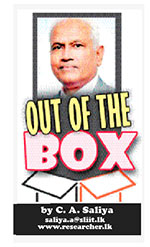 Poverty is one of the most pressing and pervasive issues facing the world today. It affects billions of people globally, diminishing their quality of life, limiting their opportunities, and perpetuating a cycle of deprivation that can span generations. Understanding poverty requires a multidimensional approach that goes beyond mere economic measures. It encompasses social, cultural, political, and environmental factors, each contributing to the persistence of poverty and shaping the lived experiences of those affected by it.
Poverty is one of the most pressing and pervasive issues facing the world today. It affects billions of people globally, diminishing their quality of life, limiting their opportunities, and perpetuating a cycle of deprivation that can span generations. Understanding poverty requires a multidimensional approach that goes beyond mere economic measures. It encompasses social, cultural, political, and environmental factors, each contributing to the persistence of poverty and shaping the lived experiences of those affected by it.
Defining Poverty
Poverty is typically defined as the state of lacking sufficient financial resources to meet basic living standards such as food, shelter, and healthcare. The most common measure is income poverty, where individuals live on less than a certain amount per day. For instance, the World Bank defines extreme poverty as living on less than $1.90 a day. However, poverty is not solely about income. The multidimensional poverty index (MPI) considers various factors, including education, health, and living standards, providing a more comprehensive view of poverty.
Sri Lanka’s economic growth and extreme level of corruption have been a crucial factor in reducing poverty. The expansion of sectors such as tourism, manufacturing, and services has provided new employment opportunities, particularly in urban areas. However, the benefits of economic growth have not been evenly distributed. Additionally, the economic disruptions caused by the COVID-19 pandemic have highlighted the vulnerability of many households, pushing some back into poverty due to loss of income and employment.
Economic Factors
The economic dimensions of poverty are often the most visible and measurable. Unemployment, underemployment, and low wages are primary contributors to poverty. In many developing countries, large segments of the population work in informal sectors with no job security, benefits, or legal protections. Economic instability and lack of access to credit also exacerbate poverty, trapping individuals and families in a cycle of debt and financial insecurity.
Globalization and technological advancements have created economic growth in many regions, but the benefits have not been equitably distributed. Wealth concentration among the elite contrasts sharply with widespread poverty. Economic policies and practices, such as austerity measures, can also negatively impact the poor, reducing access to essential services and support.
Social and Cultural Factors
Social and cultural factors play a significant role in perpetuating poverty. Discrimination, based on race, gender, ethnicity, or religion, can limit access to education, employment, and social services. Gender inequality is particularly notable, with women often experiencing higher rates of poverty due to systemic barriers such as wage gaps, limited employment opportunities, and the burden of unpaid care work.
Cultural norms and traditions can also influence poverty. In some societies, rigid social structures and expectations restrict social mobility, making it difficult for individuals to improve their economic status. Additionally, marginalized communities may lack political representation, further entrenching their disadvantaged positions.
Health and Education
Health and education are critical components of the poverty equation. Poor health can be both a cause and consequence of poverty. Lack of access to healthcare services, inadequate nutrition, and unsafe living conditions contribute to high morbidity and mortality rates among the poor. Health issues can limit individuals’ ability to work or attend school, thereby reducing their economic opportunities and perpetuating the cycle of poverty.
Education is a powerful tool for breaking the cycle of poverty. However, access to quality education remains uneven, particularly in low-income countries. Children from poor families often face barriers such as inadequate school facilities, lack of trained teachers, and the need to work to support their families. Without education, these children are less likely to secure well-paying jobs, perpetuating the cycle of poverty.
Sri Lanka boasts high literacy rates and relatively good health indicators compared to other South Asian nations, thanks to its focus on free education and healthcare services. These investments have helped build human capital and enhance economic opportunities for the poor.
Environmental Factors
Environmental issues, like deforestation, soil erosion, and water scarcity, can devastate these communities, reducing their income and food security.
Climate change exacerbates existing vulnerabilities. Extreme weather events, such as floods, droughts, and hurricanes, disproportionately impact poor communities, which often lack the resources to recover and rebuild. Additionally, the poor are more likely to live in areas prone to environmental hazards due to cheaper land prices, increasing their risk of exposure to natural disasters.
Political Factors
Political instability, corruption, and poor governance are significant barriers to poverty reduction. In many countries, corruption siphons off resources that could be used for social services, infrastructure, and economic development. Political instability disrupts economic activities, discourages investment, and leads to displacement and insecurity.
Effective governance and political will are crucial for poverty alleviation. Policies that promote economic growth, ensure fair distribution of resources, and protect human rights are essential. Social safety nets, such as unemployment benefits, healthcare, and education subsidies, can provide a buffer against economic shocks and help lift people out of poverty.
Challenges and Barriers to Sri Lanka
A significant barrier to poverty reduction in Sri Lanka is the pervasive corruption among politicians and certain segments of the administration, particularly within revenue-collecting institutions, such as customs. This corruption undermines economic growth and equitable development by diverting resources that could otherwise be used for social welfare programmes, infrastructure improvements, and other poverty alleviation initiatives. Moreover, the inefficiency and lack of transparency in these institutions hinder effective governance, erode public trust, and create an environment where illicit practices can flourish, further entrenching poverty and inequality. Addressing this issue requires robust anti-corruption measures, institutional reforms, and enhanced accountability mechanisms to ensure that resources are used effectively and equitably for the benefit of all citizens.
Microfinance: A Double-Edged Sword
Microfinance has been promoted as a tool for poverty alleviation by providing small loans to those who lack access to traditional banking services. However, in Sri Lanka, microfinance has also contributed to sustaining poverty. Many microfinance institutions charge very high interest rates, trapping borrowers in a cycle of debt. Instead of lifting families out of poverty, these loans can exacerbate financial stress and lead to further economic hardship.
High interest rates and aggressive collection practices have led to widespread indebtedness among poor households. Borrowers often take out multiple loans to repay existing debts, leading to a vicious cycle of borrowing and repayment. This situation is particularly dire in rural areas, where economic opportunities are limited, and borrowers have fewer means to repay their debts.
Addressing Poverty: A Multifaceted Approach
Addressing poverty requires a comprehensive, multifaceted approach that tackles its root causes and mitigates its effects.
Policies should focus on inclusive economic growth, controlling corruption, ensuring that the benefits of development reach the poorest segments of society. Investing in education and healthcare is vital for building human capital and improving long-term economic prospects.
Social policies must address discrimination and promote equality. Empowering marginalized communities through legal reforms, political representation, and social programmes can help break the cycle of poverty. Gender-sensitive policies are particularly important, as women and children often bear the brunt of poverty’s effects. Expanding and strengthening social protection programmes to cover more vulnerable groups, including informal workers, elderly, and disabled individuals.
Environmental sustainability should be integrated into poverty reduction strategies. Protecting natural resources, promoting sustainable agricultural practices, and addressing climate change are essential for ensuring the long-term well-being of impoverished communities. Disaster risk reduction and resilience-building measures can also mitigate the impacts of environmental shocks.
International cooperation and aid play a crucial role in supporting poverty reduction efforts, particularly in the poorest countries. However, aid should be carefully managed to ensure it reaches those who need it most and supports sustainable development.
Job Creation and Formalization:
Encouraging job creation in both urban and rural areas, with a focus on formalizing the informal sector. Providing training and skills development can help workers transition to more secure and better-paying jobs.
Education and Healthcare:
Continuing to invest in education and healthcare to build human capital. Enhancing the quality of education and making healthcare services more accessible, particularly in rural areas, will contribute to long-term poverty reduction.
Conclusion
Poverty is a complex and multifaceted issue that requires a holistic approach to address effectively. It is not merely about a lack of income but encompasses various dimensions, including health, education, social inclusion, and environmental sustainability. By working together at local, national, and international levels, we can create a more equitable and just world where poverty is significantly reduced, and all individuals have the opportunity to thrive.
A major barrier that Sri Lanka faces is the extreme level of corruption among politicians and certain segments of the administration, especially within revenue-collecting institutions, such as customs. By adopting a comprehensive and inclusive approach that addresses the root causes of poverty and promotes sustainable development, Sri Lanka can continue to make strides towards eradicating poverty and ensuring a better quality of life for all its citizens. The road ahead requires concerted efforts from the government, civil society, and the international community to build a more equitable and resilient nation.
(The writer, a senior Chartered Accountant and professional banker, is Professor at SLIIT University, Malabe. He is also the author of the “Doing Social Research and Publishing Results”, a Springer publication (Singapore), and “Samaja Gaveshakaya (in Sinhala). The views and opinions expressed in this article are solely those of the author and do not necessarily reflect the official policy or position of the institution he works for. He can be contacted at saliya.a@slit.lk and www.researcher.com)
Features
No acceptable alternative to elections in a democracy

by Jehan Perera
Government leaders appear to be considering all options for remaining in office beyond the constitutionally mandated periods of five years for the presidency and parliament. UNP General Secretary Palitha Range Bandara has announced that the government is considering postponing both the presidential and general elections for two years. There has been a considerable amount of speculation about a possible postponement of elections. In fact, this has been a part of the political discussion for over a year. The justification given for the effective freezing of politics until economic revival is assured is the need to consolidate the gains of economic recovery and prevent reversal. The assumption underlying this argument is that the present government is best suited for the job and their track record bears this out.
The IMF and international community have acknowledged that the economic situation in the country is improving and this improvement needs to be sustained. Most of the credit for the improvement in the country’s stability is attributed to the leadership of President Ranil Wickremesinghe who is seen as being indispensable to continued success. There are many opinion leaders, both from the business community and intelligentsia who have made the point that elections and a change of government can jeopardise the gains obtained for themselves, though most others may feel they have lost out which ought to be a serious concern. Recently there was a news report that a leading business conglomerate had grown by over 400 percent in the first four months of this year. But statistics on malnutrition and poverty continue their downward plunge.
Two years ago, people spilled out onto the streets to demand the resignation of the former president and government because of the intolerable economic situation. They wanted a new government that would restore their economic situation. This is still to happen and there is pent up frustration in society and demand for change that is bubbling beneath the surface. Public opinion polls show the government lagging in a distant third place behind the two main opposition parties. The disturbing call for a postponement of elections by two years arises in these circumstances where it appears that the government fears the verdict of the masses of people.
There is concern that the government is systematically increasing the powers available to law enforcement agencies to restrict civic space and quell dissent. The way in which the government is persisting in its use of the much criticized Prevention of Terrorism Act, and now the new Online Safety law which gives it the power to close the democratic space for dissent through the social media bodes ill for the future. The proposed Anti-Terrorism Act, Broadcasting Authority Act and NGO Act which are in the pipeline would give government-appointed decision makers the power to decide whether trade union action and political opinion can be subject to punitive measures even on spurious grounds of causing harm to national sovereignty and public order in the country.
SUBVERT DEMOCRACY
Both provincial and local government elections have already been postponed and are long overdue which violates democratic principles and the rights of people. In these fraught circumstances, and with decisive presidential elections around the corner, the announcement by the UNP General Secretary that the government is considering postponing both the presidential and general elections for two years is akin to a “trial balloon” being floated on this matter. A “trial balloon” refers to a preliminary or tentative proposal or idea that is floated to gauge public reaction or interest before committing to a full-fledged plan or course of action.
Elections are vital in democracy and serve as the fundamental mechanism for ensuring that the government reflects the will of the people. They provide a structured and legitimate way for citizens to choose their leaders and hold them accountable for their actions and policies. Elections provide legitimate power transfer and conflict resolution. They maintain government legitimacy and responsiveness. Thus, no true democracy can exist without regular, free, and fair elections. However, conducting elections has not been this present government’s strong point.
The problem with the UNP General Secretary’s proposal for a postponement of elections is that this goes against the fundamental principles of democracy, and accountability, sketched out above. It is on the day of elections that the voting population becomes truly supreme and obtains to their hands the power to evict their representatives or to keep them. In Sri Lanka, people have been active participants at elections with the participation rate invariably exceeding 70 percent, a percentage that would be much higher if the nearly 20 percent of the electorate working out of Sri Lanka as migrant workers are able to vote.
General Secretary Range Bandara’s willingness to subvert the fundamentals of democracy in order to extend the president and parliament’s terms of office can be seen to be driven by the pressures to retain power. On two occasions government leaders succeeded in this undemocratic project. The first time was in 1972 when the government passed an entirely new constitution in which they awarded themselves an extra two years to be in power. This was followed in an even more abusive way in 1982, when the government held a referendum to extend the term of parliament by a further five years without holding an election. This was tragically followed by the anti-Tamil pogrom of 1983 which was facilitated by senior members of that same government which led to full scale ethnic war that lasted another decade and a half.
INTERNATIONAL DISAVOWAL
The two past governments that actually succeeded in extending their terms of office were thereafter referred to with disgust and despair as the “seven-year curse” and to the “seventeen-year curse” respectively. On this basis it can be surmised that the people will not take kindly to an attempt to postpone elections for a further two years. It can also be surmised with equal certainty that the major opposition parties, and in particular the SJB and JVP, would also be opposed to such a postponement. Inasmuch as the government is concerned about a post-election scenario in which they are no longer at the centre of the power equation, so would the opposition parties be optimistic that their chances of success are better than ever before.
Viewed in this context, it is likely that the “trial balloon” regarding the postponement of elections has been floated to assess the response of the international community. The international community has become very important to the government as it provides financial assistance and markets which are absolutely necessary for the economic recovery of the country. The international community has also been supportive of the present government headed by President Wickremesinghe. The president is widely perceived to be a person with whom the international community likes to do business with on account of his rational and knowledgeable discourse on any topic they may care to bring up. The president has distanced himself from his party’s General Secretary’s assertions regarding the postponement of elections. But doubt lingers which needs to be cleared up soon in the national interest and in a manner that would restore the government’s credibility as being committed to the democratic process.
The result of the “trial balloon” put up by the government has not met with any encouragement by the international community. The international community values Sri Lanka’s democracy and sees elections as the key element in it. No sooner had the UNP General Secretary made his proposal regarding the postponement of elections that the US Ambassador Julie Chung paid a visit to the Election Commission where she inquired into the status of preparations for the presidential elections. In addition, an election monitoring delegation from the EU paid a separate visit to the Election Commission. The message is clear that the elections have to be factored into the design of economic and social stability, and this is as much a challenge to be taken up by the Sri Lankan voters as by the Sri Lankan state.
Instead of trying to postpone elections at the last minute, it would be advisable for the government to consider the following: Show evidence of implementing strict anti-corruption laws, and ensure rigorous enforcement; only 30 percent of the IMF governance conditions have in fact been implemented by the government so far, even though a big song and dance is being made about the IMF’s satisfaction with the country’s progress; The failure to meet due commitments also translates for a total of 19 unfulfilled obligations of which 10 are related to transparency and publishing requirements, which include; public semi-annually public procurement contracts and estimation of tax exemptions, publish direct costs of tax incentives. These are the enablers of massive corruption; and also, ensure free and fair elections for the presidential, parliamentary, provincial council and local government authorities according to a strict and short time frame to ensure legitimate government with a democratic mandate to rebuild the country.
Features
Is defunding tertiary education really the need of the hour?

by Farzana Haniffa
 The National Education Policy Framework, (NEPF) the latest in a series of misdirected government interventions to reform education, has by now been roundly critiqued and hopefully no longer relevant. (For a critique of NEPF in this column see Ramya Kumar’s Kuppi of March 19 2024). The Parliament’s Sectoral Oversight Committee on Education (SOCE) has made useful observations on the language with which the policy is framed and expressed a lack of agreement on many of its recommendations.
The National Education Policy Framework, (NEPF) the latest in a series of misdirected government interventions to reform education, has by now been roundly critiqued and hopefully no longer relevant. (For a critique of NEPF in this column see Ramya Kumar’s Kuppi of March 19 2024). The Parliament’s Sectoral Oversight Committee on Education (SOCE) has made useful observations on the language with which the policy is framed and expressed a lack of agreement on many of its recommendations.
The SOCE has asked that the NEPF include four guiding principles on which reforms are to be formulated: that free education as a principle will not be compromised, that education be recognized as a fundamental right, that equity and social justice be the overarching norm and standard that will govern the NEPF and all reforms, and, especially important today, the principle that education will only be effective when students have their basic needs fulfilled. These framing ideas reflect some of the values long informing education reform in the country that arguably the NEPF has paid only the most perfunctory attention. The SOCE interventions also recognizes that the country is facing its most socially debilitating economic crisis to date. It has deferred decisions on certain contested elements of the recommendations, including on restructuring higher education (HE) funding and doing away with the University Grants Commission (UGC). Overall, the select committee process seems to have enabled some rare thoughtful input to policymaking from Parliament.
While we can heave a sigh of relief that the NEPF will have to be reformulated, it is perhaps worth looking at some of the ideas that informed the NEPF process and draft. Dr. Sujata Gamage, one of the main public advocates of the NEPF, and a member of the drafting committee, has been pushing two connected ideas regarding education funding for several years now. Dr. Gamage’s writings and public appearances have put forward a critique of how we spend our education allocation in the country. Her principle claim is that our spending on HE relative to primary and secondary education, is too high. Dr. Gamage argues that we should therefore realign our education budget to reflect a greater emphasis on primary and secondary education that serves a larger segment of the population and has a greater ‘return on investment’(ROI). Dr. Gamage also claims that our spending on HE only yields individual ROI and does not yield an adequate social ROI, defined by her as the amount of tax that a person benefitting from HE pays back to the government. Given these two issues, Dr. Gamage advocates that the state should no longer increase its investment in HE and instead encourage private investment. Dr. Gamage also states that government support continues to be provided for HE only because self-interested public university students and teachers, together with other trade unions, engage in vilifying private investment in HE. These ideas are scattered throughout the NEPF as part of its framing language. (My characterization of Dr. Gamage’s position is drawn from her submission to the select committee in Parliament on expanding higher education opportunities, her conversation with Sonali Wanigabaduge on the News First TV programme The People’s Platform, and her columns in The Financial Times in 2021.)
I would like to propose a critique of Dr. Gamage’s position while asking the following questions. Given that education spending in Sri Lanka is abysmally low across all sectors, why are we not calling for an increase in education spending in general? Why are we calling for more spending for school education while cutting HE funding? Does the current research on ROI and global policy on education really support such a position? And a question for another column, why is a critique of private investment in for-profit higher education not included in this discussion?
The discussion on ROI emerges from the theorization of education as the amassing of ‘Human Capital.’ Starting in the 1960s, economists Shultz, Becker and Minzer understood education spending as an investment, correlating years in education with improved earning capacity. The term Human Capital coined by economists initially referred solely to the monetary benefit brought both to the individual and society through education. ROI in education emerges from this discussion on human capital where a calculation is made with regards to the cost of education, and in the case of further education, the loss of earnings during the time of education compared with the earnings increase after completing one’s education. ROIs are discussed in terms of individual and social returns (SROI) and they are calculated differently. The Human Capital approach is fully integrated into the education policy discussion and has become the only way in which education is spoken about by powerful actors in the education sector. The World Bank has invested heavily, globally in the discussion. See https://www.worldbank.org/en/publication/human-capital. As Niyanthini Kadirgamar has discussed recently, there are many critiques of the claims of the Human Capital model and its continued use has required the addition of several qualifications.
The conversation in Sri Lanka on SROIs in education emerges from policy positions adopted by the World Bank based on the writings of George Psacharapoulos. Kaushalya Perera has traced the World Bank’s engagement with the concept of ROI in education to two review publications, one by Psacharapoulos (1985) and another by Psacharapoulos and Patrinos (2018). (See https://simplifyresearch.wordpress.com/2023/04/30/rois-in-education-what-are-they/). Psacharapoulos’ 1985 paper that used data from 61 countries concludes “Primary education is the most profitable educational investment opportunity, followed by secondary education.” On this basis Psacharapoulos recommends that states reduce subsidies on public HE and revert the funds to primary education. (He qualifies his 1985 claim by problematically stating that university is generally attended by those who can afford to pay). In the 2018 review including 169 countries, the recommendations are somewhat different as the data now show that while SROI on primary education is still the highest, SROI on tertiary education is significantly higher than SROI on secondary education.
In the aftermath of the pandemic there is a significant emphasis globally on investing in education to ensure equity and social justice as well as to enable people to face the uncertainty of technological change and climate related crises. There is a mainstream recognition, reflected even in the NEPF that learned skills may soon be irrelevant and that individuals should be equipped to ‘reskill’ when necessary and to be engaged in ‘lifelong learning.’ Such a facility can only be cultivated at the tertiary level. For our purposes, what is said in a recent World Bank blog post by Patrinos (co-author of the 2018 report cited above) is revealing. First, it states that the SROI in human capital compared to that of investment in physical infrastructure, is much higher in ‘less developed countries’, and that rate of return-based decision-making benefits low-income, rural and female students in particular. Taking cases of Finland (1970s) and Poland (2000s) as examples, the post suggests that massive and persistent spending on education leads to significant increases in innovation while making growth more inclusive.
The blog claims, crucially that ROI is greatest for tertiary education/HE even in low-income countries. Patrinos also argues that educated youth can make better choices about their future as well as the future of their societies, pointing to evidence of a correlation between education and pro-climate behavior and policy preferences. (https://blogs.worldbank.org/en/education/50-years-after-landmark-study-returns-education-remain-strong#:~:text=But%20education%20is%20more%20than,10%25%20increase%20in%20earnings%20annually.) It is noteworthy that the NEPF’s identification of the problems facing the education sector does not include that of consistent underfunding.
Even within the limited human capital frame, current writing on ROI in education, does not seem to support a position that favours cutting public tertiary/HE spending. Indeed, more recent research highlights the necessity of greater spending on HE. Therefore, any calls for cutting HE spending (as the NEPF does) alongside references to university students as “entitled” can only reflect prevailing ideological positions about our universities as underserving of public support.
Lanka is a country with one of the lowest figures for public expenditure on education as a percentage of GDP, as various interlocuters, including Dr. Gamage, note. The entire education sector is severely underfunded, and schools and universities are scrambling to survive. We are therefore in need of urgent and substantial reform and support. Given however, that our free education system has long served as a necessary conduit for social mobility for our population, we should be extremely suspicious of any attempt to “restructure” it. We should be especially suspicious when the proposed policy changes barely acknowledge underfunding as foundational to the problems in our education system, and claim cutting funding further as being for the greater good. At a time when equity and social justice are being prioritized even by the World Bank, it behooves us to try and preserve the positives features of our existing system before proposing drastic changes.
(Farzana Haniffa is professor in the Department of Sociology, University of Colombo)
Kuppi is a politics and pedagogy happening on the margins of the lecture hall that parodies, subverts, and simultaneously reaffirms social hierarchies.
-

 Sports6 days ago
Sports6 days agoA record 84 teams to compete at Dialog Schools Rugby League 2024
-

 Business6 days ago
Business6 days agoSampath Bank launches innovative Mini-POS Solution, empowering SMEs to boost sales and enhance customer experience
-

 Business4 days ago
Business4 days agoMullenLowe Group Sri Lanka appoints top aviation professional Lakshika Gunatilake to head LowePublic
-

 Features7 days ago
Features7 days agoAll hype and hot air?
-

 Latest News5 days ago
Latest News5 days ago2023 GCE Advanced Level results released
-

 News7 days ago
News7 days agoAL results out before next Monday
-

 Sports5 days ago
Sports5 days agoBrydon Carse given three-month ban over betting breaches
-

 Opinion6 days ago
Opinion6 days agoContribution of Sri Lanka Council of Religions to Peace to Social Harmony: History and Prospective




